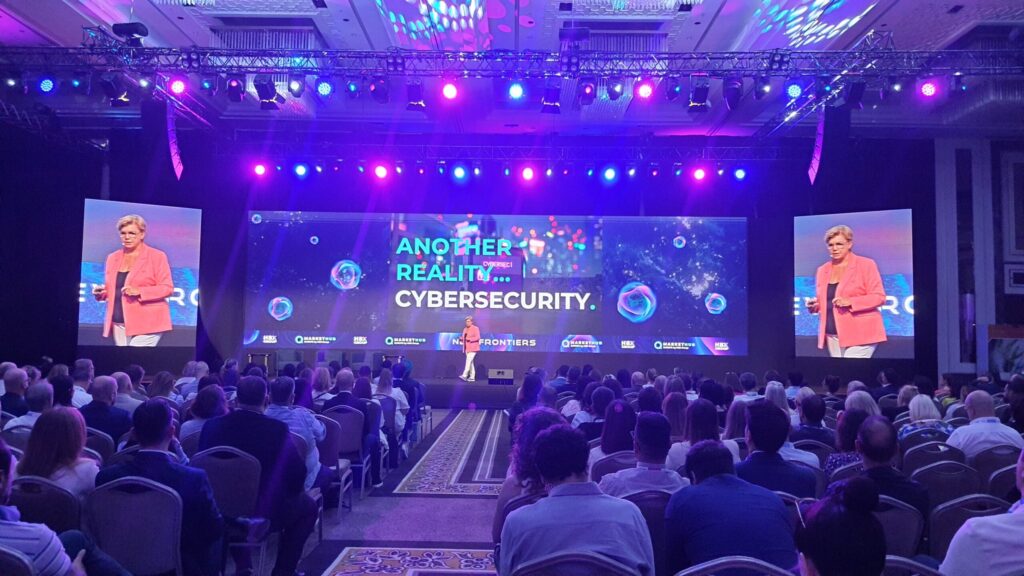REPORT from ISTANBUL – Paula Felstead, Chief Technology and Operations Officer of HBX Group, illuminated the intertwined worlds of Augmented Reality (AR) and Cybersecurity at the MarketHub Conference 2024 in Istanbul, Turkey. Her insights underscored the dual reality faced by the travel industry—one driven by innovation and the other by the urgent need for security.
The Digital Reality of Today
Felstead began by contextualizing the evolving digital reality, emphasizing how technology has seamlessly integrated into our daily lives. She highlighted how today’s digital experiences, particularly for younger generations, are as tangible and vital as physical interactions. She used Google Maps as a prime example of technology enhancing everyday actions, stressing that such integrations are the essence of linking reality with technology—a core focus at HBX Group.
“At HBX, we handle 5.7 billion searches daily,” she noted, underlining the importance of understanding and leveraging technology to enhance the travel experience for both travelers and partners.
Augmented Reality: Bridging the Digital and Physical Worlds
Felstead delved into the concept of Augmented Reality, describing it as a bridge between real-life experiences and technological capabilities. She traced the history of AR, mentioning its first application in 2009, which significantly boosted traffic to Yelp. This example illustrated AR’s potential to transform how we interact with our surroundings through our phones.
Despite its promise, AR has faced challenges, particularly with user interfaces. Felstead identified phones and desktops as the most effective interfaces but acknowledged the difficulty of projecting 3D realities. She speculated on the future of AR interfaces, mentioning glasses like Ray-Ban Meta as a potential solution. Felstead urged travel professionals to prepare for travelers equipped with such technology, which could change how they interact with destinations and services.
The AR market in travel, worth $4 billion, reflects significant investment aimed at harnessing data and enhancing travel experiences. However, the interface remains a critical challenge, with companies like Google and Apple still striving to perfect it.
Cybersecurity: A Stark Reality
Switching to cybersecurity, Felstead acknowledged the travel industry’s poor reputation in this area. She emphasized the increasing sophistication of cybercriminals and the surge in attacks on both the supply and distribution sides of the travel industry.
“We’ve seen a threefold increase in cybersecurity attacks in travel,” she reported, highlighting a weekend attack that cost one hotel over $700,000. Such incidents underscore the urgent need for robust cybersecurity measures.
Felstead provided practical advice to improve organizational security, such as updating software, using strong passwords and multi-factor authentication, installing antivirus software, backing up data, employing email filters, and limiting third-party network access. She stressed the importance of collaboration within the industry to enhance security, drawing parallels to her experience in the payments sector.
Call to Action
Felstead concluded by urging travel professionals to work together to combat cyber threats, advocating for open and transparent discussions about cybersecurity. She emphasized that collective action is crucial, as the industry’s security is only as strong as its weakest link.
The article Augmented Reality and Cybersecurity: Frontiers of Technology in Travel first appeared in TravelDailyNews International.
